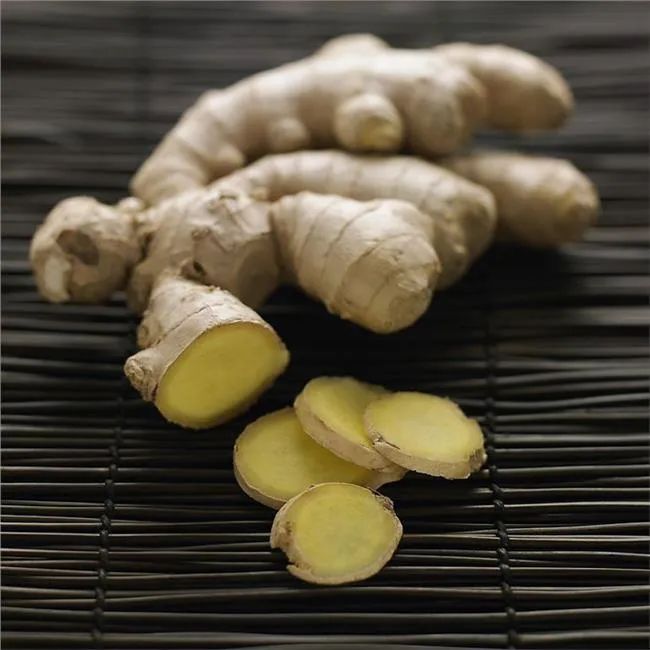
Ginger is not only a seasoning but also an important medicinal herb in Traditional Chinese Medicine (TCM). The earliest medicinal record of ginger is found in the “Shennong Bencao Jing” (Shennong’s Classic of Materia Medica), which states that dried ginger (gan jiang) “is used for chest fullness, cough, and counterflow of qi, warms the middle, stops bleeding, induces sweating, expels wind-dampness, and treats diarrhea and dysentery. Fresh ginger (sheng jiang) is especially good.” Over time, many medicinal preparations have been derived from ginger, each with different effects. This article will introduce how TCM utilizes ginger, following the order of its medicinal use.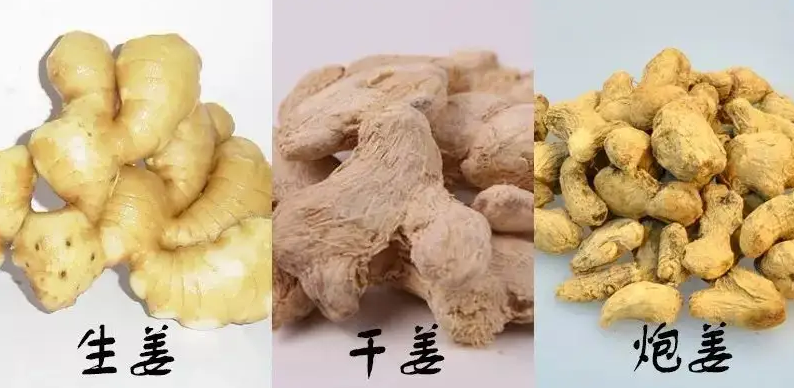 Dried Ginger (Gan Jiang)The first is dried ginger, which is recorded in the “Shennong Bencao Jing”. The effects of dried ginger include warming the middle and dispersing cold, warming yang and unblocking meridians, and warming the lungs and transforming phlegm. It is a warming interior medicine commonly used to treat cold pain in the abdomen, cough with cold phlegm, vomiting, diarrhea, and weak pulse with cold limbs.Dried ginger is often used in combination with Aconite (Fu Zi). Examples of formulas include: Li Zhong Wan (Regulate the Middle Pill), Fu Zi Li Zhong Wan (Aconite Regulate the Middle Pill), Si Ni Tang (Frigid Extremities Decoction), Xiao Qing Long Tang (Minor Blue Dragon Decoction), and Zhu Che Wan (Stop the Car Pill). Among these, Li Zhong Wan is derived from the “Shang Han Lun” (Treatise on Cold Damage) and contains ginseng (Ren Shen), Bai Zhu (White Atractylodes), roasted licorice (Zhi Gan Cao), and dried ginger. Its effects are to warm the middle and disperse cold, tonify qi, and strengthen the spleen, used for abdominal pain and diarrhea due to spleen and stomach deficiency with cold.Fu Zi Li Zhong Wan, derived from the “Taiping Huimin Heji Ju Fang” (Formulas for the People’s Welfare), adds a very warming herb, Aconite, enhancing the warming effect. The original text states, “It treats cold weakness of the spleen and stomach, abdominal cramping pain, vomiting, diarrhea, cholera, cramps, cold body with slight sweating, cold hands and feet, fullness in the heart and abdomen, rumbling in the abdomen, persistent vomiting, and inability to eat, as well as all cold and stagnant conditions.” In the Ming Dynasty, Zhang Jingyue added symptoms such as abdominal pain from cold in the room, cold hands and feet, and food causing coldness.Si Ni Tang, also from the “Shang Han Lun”, contains only Aconite, dried ginger, and roasted licorice, and is a representative formula for rescuing yang and reversing counterflow, addressing yang deficiency with cold extremities. In critical conditions, Si Ni Tang is more effective than wild ginseng.Li Zhong Wan, Fu Zi Li Zhong Wan, and Si Ni Tang all utilize the warming and cold-dispersing effects, while Xiao Qing Long Tang, also from the “Shang Han Lun”, employs dried ginger for warming the lungs and transforming phlegm, used for treating exterior wind-cold with internal water and phlegm cough and wheezing.Fresh Ginger (Sheng Jiang)Next, we discuss fresh ginger, which is frequently used in the “Shang Han Lun”. The combination of fresh ginger and jujube (Da Zao) appears often. Later physicians, such as Tao Hongjing in his “Ming Yi Bie Lu” (Record of Famous Physicians), noted: “Fresh ginger, with a spicy and slightly warm flavor, is used for cold damage, headache, nasal congestion, cough with counterflow of qi, and stopping vomiting.” Compared to dried ginger, fresh ginger has a stronger effect in releasing the exterior and dispersing cold, suitable for wind-cold exterior conditions, while dried ginger is better for warming the interior, particularly for deficiency-cold conditions of the spleen and stomach.Moreover, fresh ginger can also detoxify fish and crab poison and counteract the toxicity of raw Pinellia (Ban Xia). The combination of fresh ginger and Pinellia is also a classic pairing. The “Jin Gui Yao Lue” (Essential Prescriptions of the Golden Cabinet) states: “Both Pinellia and fresh ginger juice are good at stopping vomiting; when used together, the effect is even better; they also have the function of opening the appetite and harmonizing the middle. It is used for disharmony of stomach qi, vomiting, and restlessness.”The first formula in the “Shang Han Lun”, Gui Zhi Tang (Cinnamon Twig Decoction), is used for exterior wind-cold and wind evil causing headache, fever, sweating, and aversion to wind, and it employs the combination of fresh ginger and jujube.Processed Ginger (Pao Jiang)Processed ginger is made by stir-frying dried ginger with hot sand until the surface puffs up and turns brown. It is also recorded in the “Shang Han Lun”, has a warming nature, and a spicy flavor. It enters the spleen, stomach, and kidney meridians. Its effects include warming the meridians and stopping bleeding, and warming the middle and stopping pain. It is mainly used for yang deficiency with blood loss, metrorrhagia, abdominal pain, and vomiting and diarrhea.The “Jin Gui Yao Lue” records the Gan Cao Gan Jiang Tang (Licorice and Dried Ginger Decoction), which actually uses processed dried ginger, and is used to treat lung deficiency with cold, characterized by expectoration of foamy saliva and frequent urination; the absence of cough is a key point for differential diagnosis. The original text states: “Four taels of licorice, two taels of roasted dried ginger, stir-fried, boil with three sheng of water, and reduce to one sheng and five cups, strain, and take warm in two doses.” Processed dried ginger has a stronger effect in warming yang and stabilizing the middle, but a weaker dispersing power.Ginger Charcoal (Jiang Tan)Ginger charcoal is first recorded in the Song Dynasty and is a processed product formed by frying ginger into charcoal. It is actually a classification of processed ginger, but the charcoal-fried ginger is more inclined to stop bleeding, as charcoal itself has a significant effect in stopping bleeding.
Dried Ginger (Gan Jiang)The first is dried ginger, which is recorded in the “Shennong Bencao Jing”. The effects of dried ginger include warming the middle and dispersing cold, warming yang and unblocking meridians, and warming the lungs and transforming phlegm. It is a warming interior medicine commonly used to treat cold pain in the abdomen, cough with cold phlegm, vomiting, diarrhea, and weak pulse with cold limbs.Dried ginger is often used in combination with Aconite (Fu Zi). Examples of formulas include: Li Zhong Wan (Regulate the Middle Pill), Fu Zi Li Zhong Wan (Aconite Regulate the Middle Pill), Si Ni Tang (Frigid Extremities Decoction), Xiao Qing Long Tang (Minor Blue Dragon Decoction), and Zhu Che Wan (Stop the Car Pill). Among these, Li Zhong Wan is derived from the “Shang Han Lun” (Treatise on Cold Damage) and contains ginseng (Ren Shen), Bai Zhu (White Atractylodes), roasted licorice (Zhi Gan Cao), and dried ginger. Its effects are to warm the middle and disperse cold, tonify qi, and strengthen the spleen, used for abdominal pain and diarrhea due to spleen and stomach deficiency with cold.Fu Zi Li Zhong Wan, derived from the “Taiping Huimin Heji Ju Fang” (Formulas for the People’s Welfare), adds a very warming herb, Aconite, enhancing the warming effect. The original text states, “It treats cold weakness of the spleen and stomach, abdominal cramping pain, vomiting, diarrhea, cholera, cramps, cold body with slight sweating, cold hands and feet, fullness in the heart and abdomen, rumbling in the abdomen, persistent vomiting, and inability to eat, as well as all cold and stagnant conditions.” In the Ming Dynasty, Zhang Jingyue added symptoms such as abdominal pain from cold in the room, cold hands and feet, and food causing coldness.Si Ni Tang, also from the “Shang Han Lun”, contains only Aconite, dried ginger, and roasted licorice, and is a representative formula for rescuing yang and reversing counterflow, addressing yang deficiency with cold extremities. In critical conditions, Si Ni Tang is more effective than wild ginseng.Li Zhong Wan, Fu Zi Li Zhong Wan, and Si Ni Tang all utilize the warming and cold-dispersing effects, while Xiao Qing Long Tang, also from the “Shang Han Lun”, employs dried ginger for warming the lungs and transforming phlegm, used for treating exterior wind-cold with internal water and phlegm cough and wheezing.Fresh Ginger (Sheng Jiang)Next, we discuss fresh ginger, which is frequently used in the “Shang Han Lun”. The combination of fresh ginger and jujube (Da Zao) appears often. Later physicians, such as Tao Hongjing in his “Ming Yi Bie Lu” (Record of Famous Physicians), noted: “Fresh ginger, with a spicy and slightly warm flavor, is used for cold damage, headache, nasal congestion, cough with counterflow of qi, and stopping vomiting.” Compared to dried ginger, fresh ginger has a stronger effect in releasing the exterior and dispersing cold, suitable for wind-cold exterior conditions, while dried ginger is better for warming the interior, particularly for deficiency-cold conditions of the spleen and stomach.Moreover, fresh ginger can also detoxify fish and crab poison and counteract the toxicity of raw Pinellia (Ban Xia). The combination of fresh ginger and Pinellia is also a classic pairing. The “Jin Gui Yao Lue” (Essential Prescriptions of the Golden Cabinet) states: “Both Pinellia and fresh ginger juice are good at stopping vomiting; when used together, the effect is even better; they also have the function of opening the appetite and harmonizing the middle. It is used for disharmony of stomach qi, vomiting, and restlessness.”The first formula in the “Shang Han Lun”, Gui Zhi Tang (Cinnamon Twig Decoction), is used for exterior wind-cold and wind evil causing headache, fever, sweating, and aversion to wind, and it employs the combination of fresh ginger and jujube.Processed Ginger (Pao Jiang)Processed ginger is made by stir-frying dried ginger with hot sand until the surface puffs up and turns brown. It is also recorded in the “Shang Han Lun”, has a warming nature, and a spicy flavor. It enters the spleen, stomach, and kidney meridians. Its effects include warming the meridians and stopping bleeding, and warming the middle and stopping pain. It is mainly used for yang deficiency with blood loss, metrorrhagia, abdominal pain, and vomiting and diarrhea.The “Jin Gui Yao Lue” records the Gan Cao Gan Jiang Tang (Licorice and Dried Ginger Decoction), which actually uses processed dried ginger, and is used to treat lung deficiency with cold, characterized by expectoration of foamy saliva and frequent urination; the absence of cough is a key point for differential diagnosis. The original text states: “Four taels of licorice, two taels of roasted dried ginger, stir-fried, boil with three sheng of water, and reduce to one sheng and five cups, strain, and take warm in two doses.” Processed dried ginger has a stronger effect in warming yang and stabilizing the middle, but a weaker dispersing power.Ginger Charcoal (Jiang Tan)Ginger charcoal is first recorded in the Song Dynasty and is a processed product formed by frying ginger into charcoal. It is actually a classification of processed ginger, but the charcoal-fried ginger is more inclined to stop bleeding, as charcoal itself has a significant effect in stopping bleeding.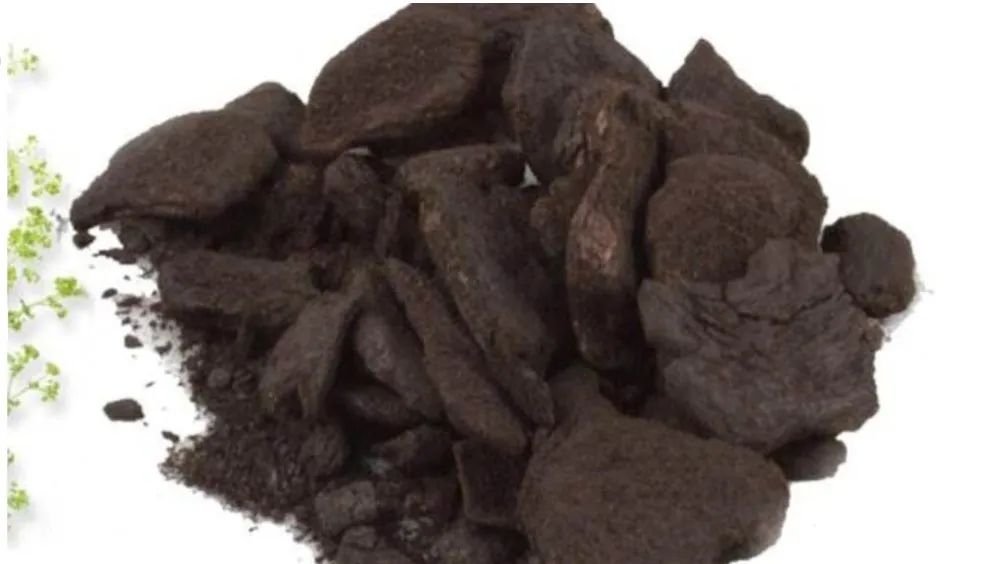 Regarding the hemostatic effect of ginger charcoal, many physicians throughout history have discussed it. For example, the “Bencao Jing Shu” states, “The mention of stopping bleeding refers to the fact that blood deficiency leads to heat, and heat causes reckless movement; fried dried ginger can guide various blood-tonifying herbs into the yin aspect, and when the blood is replenished, yin is generated, and heat retreats, preventing blood from moving recklessly.”The “National Standard for the Processing of Chinese Medicinal Herbs” also requires that ginger charcoal be distinguished from processed ginger: “Ginger charcoal warms the meridians and stops bleeding, primarily treating vomiting blood, metrorrhagia, and blood loss due to yin deficiency.”Galangal (Gao Liang Jiang)Strictly speaking, galangal is not a product of dried ginger, as it comes from the galangal plant, has a warming nature and a spicy flavor. Its effects include warming the stomach, dispersing cold, stopping pain, and stopping vomiting. Galangal is first recorded in Tao Hongjing’s “Ming Yi Bie Lu” and is a good warming medicine for the stomach. The “Bie Lu” states, “It is warm in nature and is used for sudden cold, cold counterflow in the stomach, and cholera abdominal pain.”
Regarding the hemostatic effect of ginger charcoal, many physicians throughout history have discussed it. For example, the “Bencao Jing Shu” states, “The mention of stopping bleeding refers to the fact that blood deficiency leads to heat, and heat causes reckless movement; fried dried ginger can guide various blood-tonifying herbs into the yin aspect, and when the blood is replenished, yin is generated, and heat retreats, preventing blood from moving recklessly.”The “National Standard for the Processing of Chinese Medicinal Herbs” also requires that ginger charcoal be distinguished from processed ginger: “Ginger charcoal warms the meridians and stops bleeding, primarily treating vomiting blood, metrorrhagia, and blood loss due to yin deficiency.”Galangal (Gao Liang Jiang)Strictly speaking, galangal is not a product of dried ginger, as it comes from the galangal plant, has a warming nature and a spicy flavor. Its effects include warming the stomach, dispersing cold, stopping pain, and stopping vomiting. Galangal is first recorded in Tao Hongjing’s “Ming Yi Bie Lu” and is a good warming medicine for the stomach. The “Bie Lu” states, “It is warm in nature and is used for sudden cold, cold counterflow in the stomach, and cholera abdominal pain.”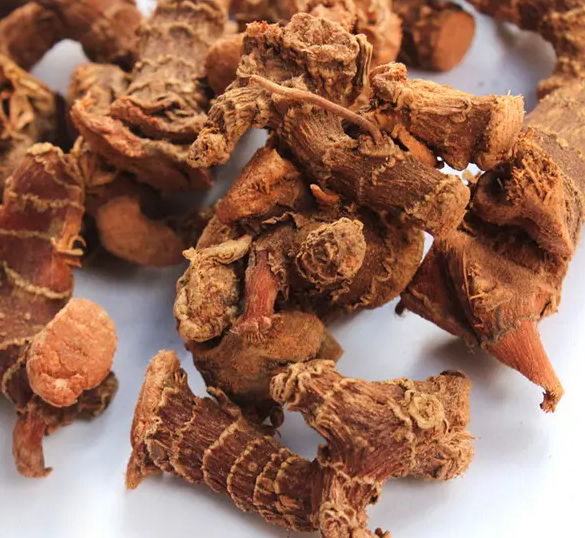 In summary, the warming effects of fresh ginger, dried ginger, and processed ginger gradually increase, while their cold-dispersing effects gradually decrease. Ginger charcoal is more inclined to warm the meridians and stop bleeding, while galangal, although a close relative, has effects similar to dried ginger but emphasizes warming the interior and dispersing cold. Dried ginger focuses more on rescuing yang and reversing counterflow, while galangal has a stronger warming nature and should not be taken for long periods. Therefore, galangal is classified as a medium-grade herb by Tao Hongjing, while dried ginger is considered a superior herb.
In summary, the warming effects of fresh ginger, dried ginger, and processed ginger gradually increase, while their cold-dispersing effects gradually decrease. Ginger charcoal is more inclined to warm the meridians and stop bleeding, while galangal, although a close relative, has effects similar to dried ginger but emphasizes warming the interior and dispersing cold. Dried ginger focuses more on rescuing yang and reversing counterflow, while galangal has a stronger warming nature and should not be taken for long periods. Therefore, galangal is classified as a medium-grade herb by Tao Hongjing, while dried ginger is considered a superior herb.
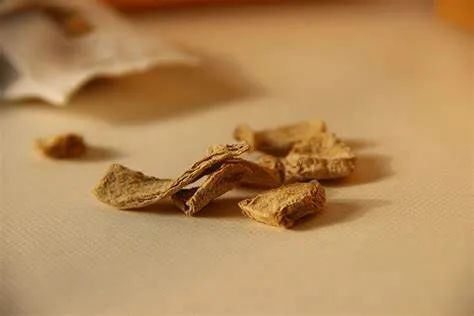
© Zheyan Looks at TCM

Long press the QR code below to follow us
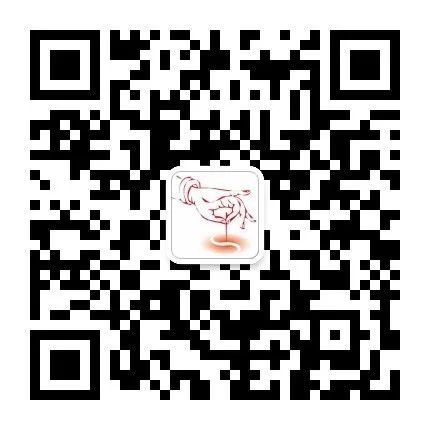

Discussing Medicine and Teaching Principles, Inheriting the Wisdom of Qi Huang
Exploring Hidden Depths, Seeking Profound Insights

Please indicate the source when reprinting
Some content is sourced from the internet, and copyright belongs to the original author
If there is any infringement, please contact for removal
Legal Advisor: Shandong Longao Law Firm
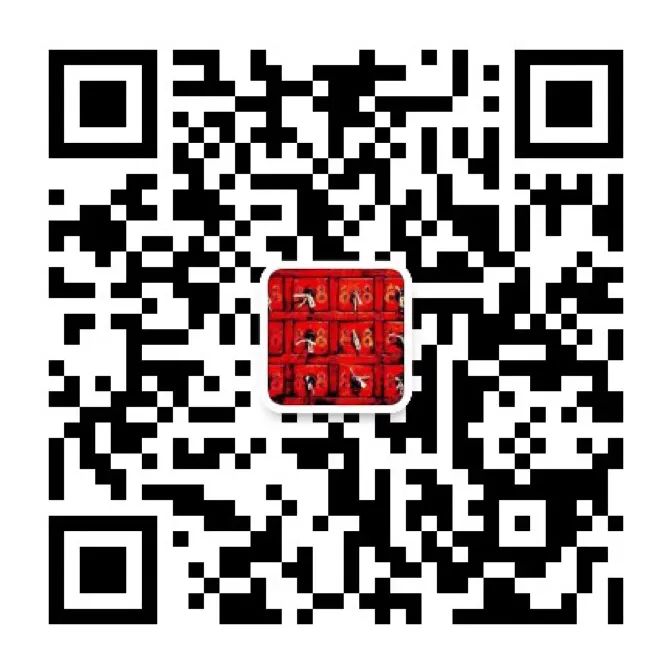
WeChat|xiayu99

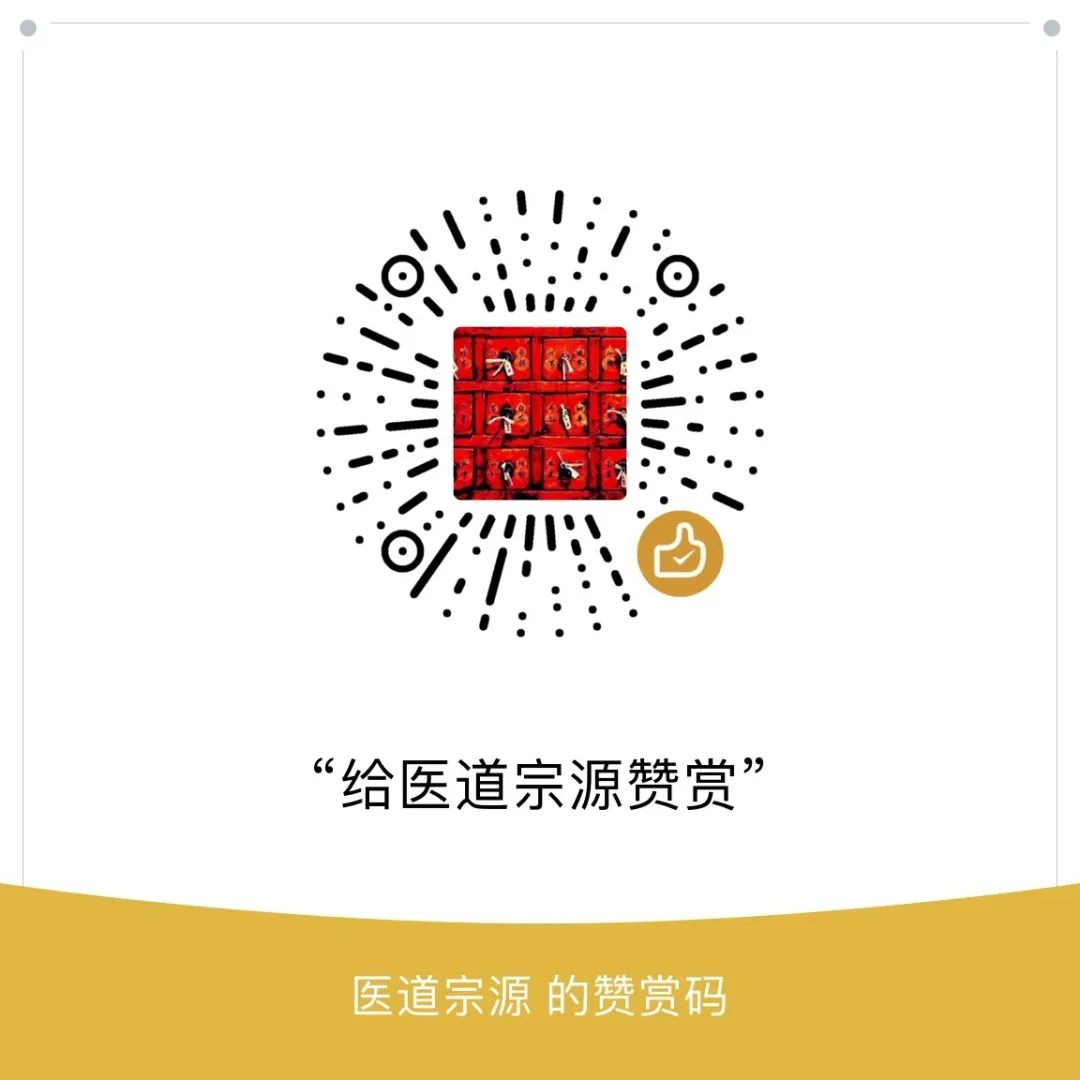

If you like this article
If interested, please click the lower right corner, there is something for youto see

